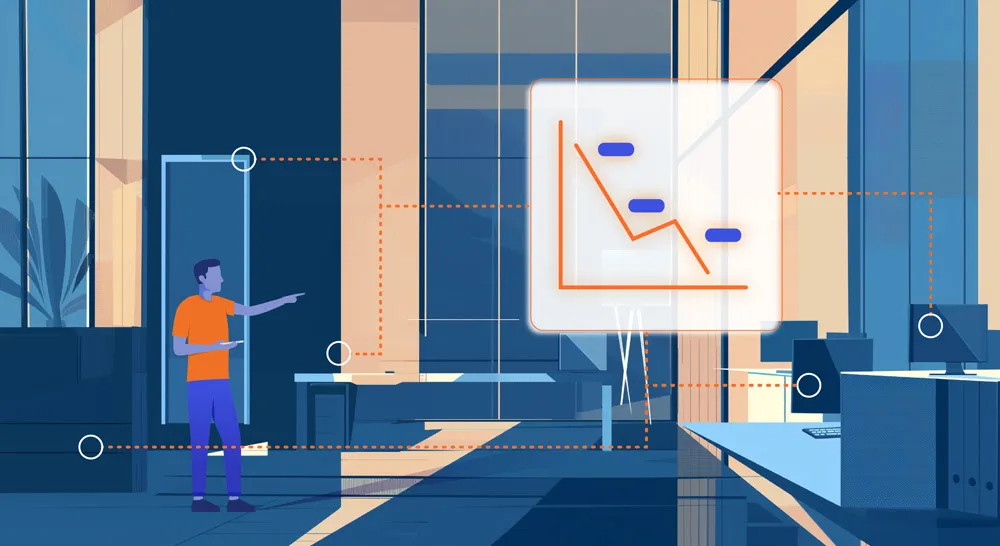
Securing AI-Driven Cyber Defenses Against Adversarial Attacks
As artificial intelligence (AI) becomes integral to cybersecurity defenses, the need for robust protections against adversarial attacks has never been more urgent. Adversarial attacks exploit vulnerabilities in AI systems, allowing threat actors to bypass, mislead, or even overwhelm cyber defenses. CYPFER, a leader in cyber defense, employs advanced strategies to protect AI-powered solutions from these emerging threats, ensuring Cyber Certainty™ for clients worldwide. This whitepaper explores adversarial tactics, highlights potential AI vulnerabilities, and presents key defense strategies that underscore CYPFER’s commitment to resilience in today’s evolving threat landscape.
1. Understanding Adversarial Attacks in AI
What Are Adversarial Attacks?
Adversarial attacks are intentional manipulations in data designed to exploit weaknesses in AI systems. By subtly altering inputs, attackers can cause AI models to misclassify or make incorrect decisions. For instance, a threat actor might add imperceptible noise to malware data, tricking an AI detection model into classifying it as harmless. As AI’s role in cybersecurity expands, these tactics pose substantial risks, especially in threat detection and response.
Why They Matter in Cybersecurity
In cybersecurity, adversarial attacks represent a critical vulnerability. AI systems used for threat detection, fraud prevention, and data classification are susceptible to these attacks, which can render defenses ineffective. When adversarial attacks succeed, malicious activities may go undetected, potentially leading to data breaches, financial fraud, and other system failures.
Types of Adversarial Tactics
Evasion Attacks: Modify inputs to appear non-threatening, allowing threats to bypass detection.
Poisoning Attacks: Manipulate training data, undermining the AI model’s accuracy and reliability.
Model Extraction Attacks: Steal or replicate AI models to exploit their structure and vulnerabilities.
2. Vulnerabilities in AI Models: A Closer Look
Technical Vulnerabilities
Many adversarial vulnerabilities stem from an AI model’s design and architecture. These technical weaknesses often include:
Model Architecture: Complex models may inadvertently amplify small perturbations, making them vulnerable to attack.
Overfitting: Models trained on limited data can become overly sensitive to specific features, leading to errors when faced with unfamiliar patterns.
Perturbation Sensitivity: Models that react strongly to slight input noise are more likely to misclassify adversarial inputs.
Operational Vulnerabilities
Beyond technical design, operational vulnerabilities can also make AI systems susceptible to attacks:
Outdated Models: AI models need continuous updates to adapt to new data and attack patterns.
Insufficient Monitoring: Without regular monitoring, it becomes difficult to detect and address adversarial exploitation in real time.
Data Quality Issues: Biases can emerge when data lacks diversity or is incorrectly labeled, increasing the model’s vulnerability to attacks.
Impact on Cybersecurity Operations
Adversarial vulnerabilities can disrupt essential cybersecurity functions, causing threats to be misclassified or missed entirely. For example, attackers might use evasion tactics to disguise malicious data, exposing organizations to data breaches and financial fraud.
3. Defense Mechanisms: Strategies to Safeguard AI
Robust Model Design
Defensive strategies begin with resilient model architecture. Some effective techniques include:
Adversarial Training: Exposing models to simulated attacks during training to increase resilience.
Defensive Distillation: Smoothing decision boundaries through temperature scaling during training to reduce sensitivity to minor perturbations.
Regularization Techniques: Ensuring that models do not rely excessively on any single feature, which helps mitigate vulnerabilities.
Ongoing Threat Intelligence and Monitoring
Effective defenses require real-time threat intelligence and constant monitoring. CYPFER’s threat intelligence services offer early detection of adversarial tactics, enabling tailored responses to emerging threats.
Ensemble Methods and Model Hardening
Using multiple models in an ensemble approach reduces the risk of successful adversarial attacks by making it more challenging to exploit weaknesses across all models. Model hardening techniques like input sanitization and noise reduction further safeguard against perturbations.
Human-In-the-Loop Systems
Incorporating human oversight helps AI-driven defenses maintain higher accuracy and validate potential adversarial attacks. Expert review prevents costly false positives and negatives, ensuring a balanced approach.
4. How CYPFER Safeguards AI-Powered Cybersecurity Solutions
CYPFER’s Layered Defense Approach
CYPFER employs a multi-layered defense approach that combines AI model hardening with expert-driven oversight, ensuring that AI defenses are both resilient and adaptable. Our approach includes proactive strategies like adversarial testing and model stress testing to prepare AI systems against various attack scenarios.
Proactive Vulnerability Assessments
To stay ahead of threats, CYPFER conducts regular assessments of AI models, simulating real-world adversarial attacks to identify and address vulnerabilities. These tests cover scenarios like evasion and poisoning attacks, enabling continuous strengthening of client defenses.
Real-World Adversarial Example
In one instance, a client’s threat detection model was targeted by an evasion attack. CYPFER’s team simulated the attack scenario, identified weaknesses in the model, and implemented adjustments to prevent future attacks. This proactive measure safeguarded the organization’s infrastructure and reinforced their incident response capabilities.
5. The Role of AI in Cyber Incident Response
Augmenting Detection and Response
AI plays a vital role in early threat detection, rapid data analysis, and response prioritization. However, these capabilities remain vulnerable to adversarial exploitation. By integrating sophisticated adversarial defenses, CYPFER ensures that AI models retain reliability even under threat.
CYPFER’s Response Protocol for Adversarial Threats
In the event of a suspected adversarial attack, CYPFER’s team performs an in-depth assessment to identify vulnerabilities and adjust model defenses in real time. Our response protocol emphasizes immediate action and iterative testing, helping organizations experience minimal disruption.
6. The Future of AI Security and Adversarial Defense
Emerging Trends in Adversarial Tactics
With AI technology advancing rapidly, adversarial tactics are expected to become more sophisticated, including potential multi-vector attacks and automated adversarial bots. Staying vigilant and adaptive is essential.
CYPFER’s Commitment to Innovation
CYPFER continues to invest in AI security research and development, staying ahead of adversarial trends. Our approach to cybersecurity combines technical defenses with partnerships in AI research, ensuring that our clients benefit from the latest in adversarial defense.
7. Conclusion: Ensuring Cyber Certainty™ with CYPFER
Why Choose CYPFER
CYPFER’s unique position as a cybersecurity leader provides organizations with trusted guidance in securing AI-driven defenses against adversarial attacks. By choosing CYPFER, organizations gain access to world-class expertise, proactive vulnerability assessments, and a dedicated team committed to securing AI systems.
Next Steps for Organizations
To protect AI-based cybersecurity solutions, organizations are encouraged to consult with CYPFER’s experts for a comprehensive assessment and tailored defensive strategies. Contact us today to learn how CYPFER can ensure Cyber Certainty™ in an ever-evolving cyber landscape.
Your Complete Cyber Security Partner:
Every Step, Every Threat.
At CYPFER, we don’t just protect your business—we become part of it.
As an extension of your team, our sole focus is on cyber security, ensuring your peace of mind. From incident response and ransomware recovery to digital forensics and cyber risk, we integrate seamlessly with your operations. We’re with you 24×7, ready to tackle threats head-on and prevent future ones.
Choose CYPFER, and experience unmatched dedication and expertise. Trust us to keep your business secure and resilient at every turn.

Get Cyber Certainty™ Today
We’re here to keep the heartbeat of your business running, safe from the threat of cyber attacks. Wherever and whatever your circumstances.
Contact CYPFER





